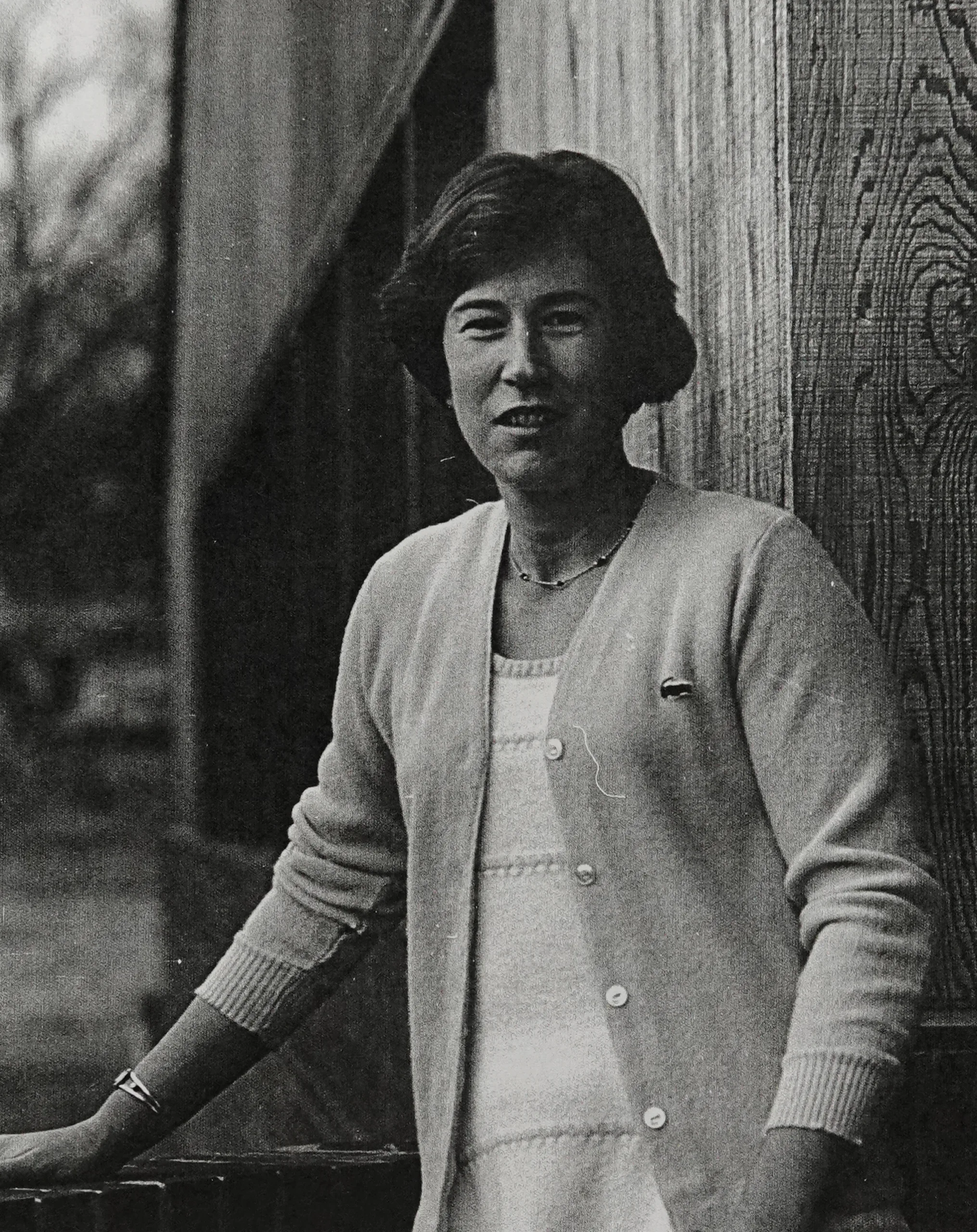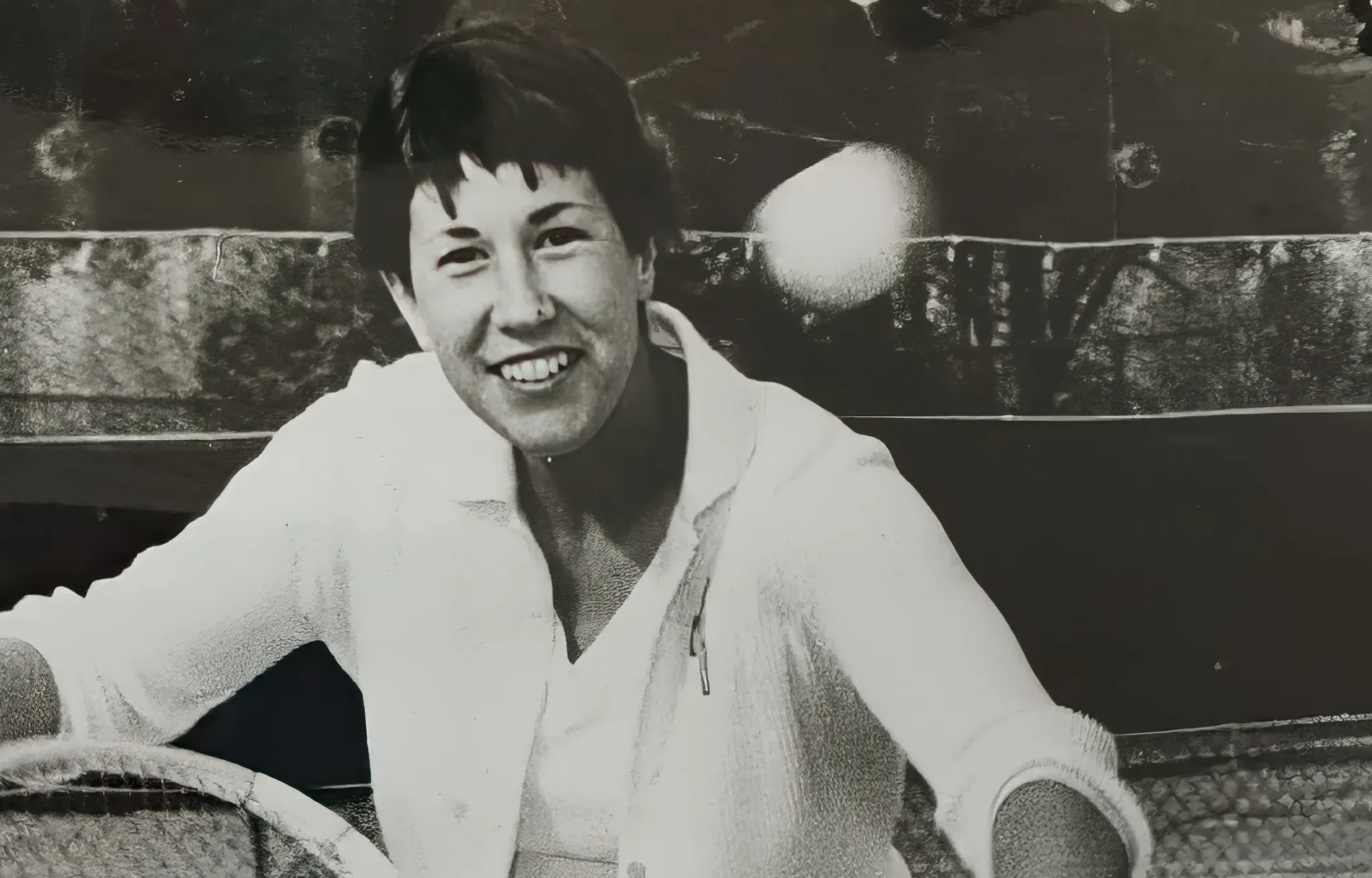Story by Ron Cobb
Special to the St. Louis Tennis Hall of Fame
In anticipation of the spring 2024 opening of the new St. Louis Tennis Hall of Fame at the Armory, 2016 inductee Ron Cobb is writing regular “What’s Up With” features on Hall of Fame members and updates about the Hall of Fame.
It was shaping up to be a Wightman Cup whitewash in August 1961 when the United States faced Great Britain at the Saddle & Cycle Club in Chicago.
The American team included No. 1-ranked Darlene Hard, but she was out with an illness. So the USA sent out three teenagers to play a British side that featured Angela Mortimer, who had won Wimbledon just a month earlier; Christine Truman, who was the Wimbledon runner-up to Mortimer; and Ann Haydon, who two months earlier had won the French Championships.
The American teens were 17-year-old Billie Jean Moffitt, 18-year-old Karen Hantze and 18-year-old Justina Bricka.

The U.S. team, leading 3-1 in the best-of-seven format, sent Justina out to face Mortimer, and to the surprise of many, Justina, who had only just graduated from University City High School, clinched the cup with a three-set victory.
A Time magazine account said, “What made the upset all the more upsetting (to the Brits) was the 18-year-old who engineered it: a rangy (5 ft. 6½ inch, 125 lbs.) brunette from St. Louis named Justina Bricka. … Lefthander Bricka ran Angela Mortimer so hard that the British player suffered leg cramps and had to withdraw from the final doubles match. To sew up the crucial third set — which retrieved the Wightman Cup that the U.S. lost in 1960 — unheralded Justina Bricka needed just 25 minutes.”
The British press weren’t so restrained.
Said the Daily Telegraph: “Had [the Americans’] exploits been recorded in a school adventure story, it would have been held to be improbable.” The London Daily Sketch called for an investigation.
Looking back 62 years later, Justina recalls, “The Wightman Cup was really something back then. To get on the team, and then to win the deciding match, it was just thrilling.”
It was extra thrilling for Justina because she knew the Boston woman – Hazel Hotchkiss Wightman — who donated the Wightman Cup. Justina had relatives in Boston, and as a young teen she would go there over the Christmas holidays to play in Wightman’s national indoor tournaments.
“If you went up there, you’d stay at her house, which was really cool,” Justina says.
Justina had taken up tennis just a couple of years before those Boston trips. Her parents would drop her off at a U. City swimming pool in the summer, but Justina quickly abandoned the water and wandered over to a handball court, where she could hit balls against its backboard. She loved tennis right away and found her way to a clinic conducted by Earl Buchholz Sr.
Justina’s Wightman Cup victory, and her doubles prowess overall, impressed Margaret Court, because a year later the Aussie great asked Justina to be her doubles partner for a year when Court was having a dispute with Australia’s tennis association. In 1962, their partnership produced seven titles and a runner-up finish at the French.
Justina also had success with Carol Aucamp, as the two won three doubles matches against Billie Jean King, and with Mary Ann Beattie, with whom Justina won the Irish doubles. But a year after going to Wimbledon in 1965 and defeating Virginia Wade in the fourth round, then losing to Court in the quarters, Justina’s name disappeared from the tour’s drawsheets. She retired, started a family and then became a teaching pro at Triple A and then Frontenac Racquet Club, where she eventually was the owner/manager.

Actually, she wasn’t quite done with the women’s tour. In 1980 and ’81, she served as tour referee on the Avon tour.
“There wasn’t any money,” Justina said, explaining her decision to retire from competition. “If you wanted to travel, you had to get a sponsor on your own unless you were from California — they had terrific financing. They were given everything, their flights were paid for to come back East every year.
“We drove around to tournaments. It wasn’t quite the same. If you were from California, you were born with a silver spoon in your mouth.”
These days, Justina splits time between her home in Creve Coeur and her get-away A-frame at Innsbrook.
“I do a little fishing, but I’m sort of limited,” she said. “I’ve got a totally torn rotator cuff, a two-thirds torn bicep in my left arm – and I’m left-handed — spinal stenosis and arthritis.”

She doesn’t keep many trophies and other souvenirs of her tennis days, but one thing she does keep is a replica of the sterling silver Wightman Cup vase that she and her teammates received in 1961. That memento isn’t going anywhere.


